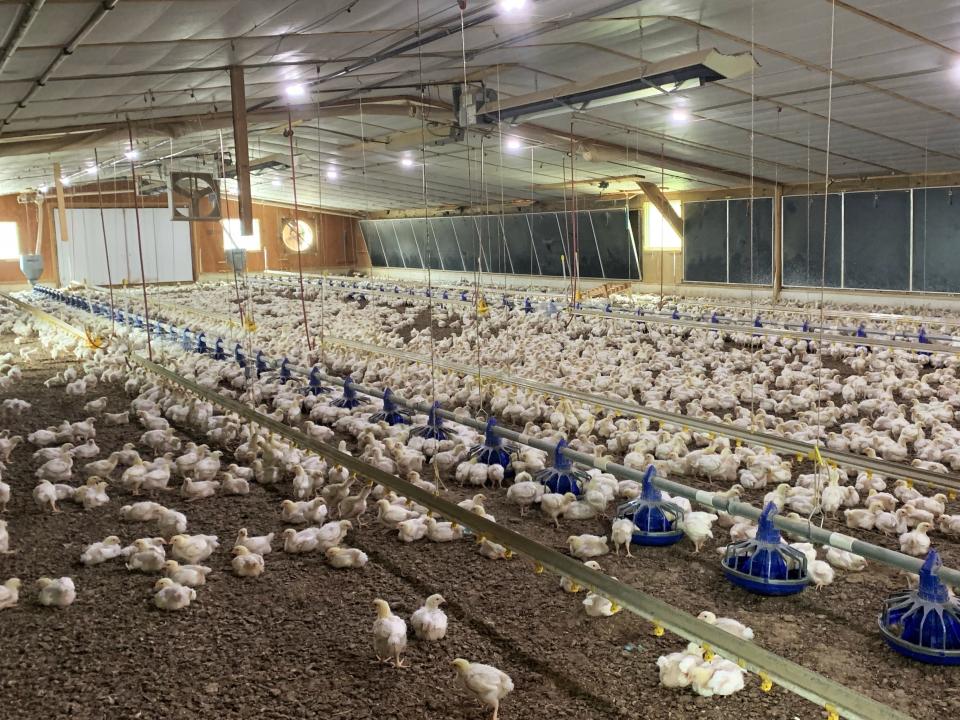How chicken, that 'great and glorious institution,' came to rule the roost on Delmarva
"The chicken is a great and glorious institution,” the Middletown Transcript declared on Feb. 25, 1882, “and in no place in the wide world is he served up in such perfection as on the Delaware and Maryland Peninsula. There is an original luxuriousness about Delaware and Eastern Shore fried chicken that one who has eaten it can never forget, and alongside of which the fried chicken of the West and North seems nothing but a base imitation.”
Mighty chickens were first domesticated in eastern Asia and Africa
Originating in eastern Asia and Africa, chickens were domesticated many centuries ago. The 16th century French monarch Henri IV declared, “I want there to be no peasant in my kingdom so poor that he is unable to have a chicken in his pot every Sunday.” Henry was assassinated in 1610, before he was able to carry out that wish.

A few years before Henry met his unfortunate demise, the Jamestown, settlers arrived in the Virginia colony, and they brought with them chickens. Two years after the colony was established, there were an estimated 500 chickens in Virginia.
Burley Oak's new summer brews: Burley Oak has new craft beers for summer, and yes, even spirits. Find out what's brewing.
Colonists brought chicken with them as they spread across Delmarva
Most barnyard animals took a significant amount of work to maintain them. Chickens, however were reasonably self-sufficient. During the day, they foraged on dropped grain, bugs, worms and other morsels that they found on the ground. At night, chickens roosted in trees to escape foxes, hawks and other predators. As the colonists spread across the Delmarva Peninsula, chickens went with them.

In the sailing ship era, many of the ships that stopped at Lewes carried live chickens. The mainstay of a sailor’s diet was salted meat that could withstand months without refrigeration. Although the meat remained edible, it was eternally tough, barely appetizing and hardly nutritious.
In addition to salted meat, the diet at sea was supplemented by fish, cheese, oatmeal and ship’s biscuit, which was also known by the more descriptive name, “hardtack.” Ship’s biscuit was an unleavened flour concoction that resembled an oversized cracker. Legend has it that the phrase “getting the bugs out” originated with the sailors’ habit of pounding their hardtack on the table to rid the biscuit of unwanted “protein.”
The shipboard chickens and their eggs were not for ordinary sailors’ consumption, however. They most often ended up on the captain’s table.
Library may move to Ward Museum: Downtown library move to Ward Museum building in works. Here's all to know.
The origin of the name 'Blue Hen' in Delaware
During the American Revolution, Capt. Jonathan Caldwell of the First Delware Regiment raised a strain of chickens that were descended from a hen with steely blue feathers. Caldwell’s “Blue Hens” were noted for their ferocity, and they reflected the fighting prowess of the regiment. The soldiers became known as the “Blue Hen’s Chickens,” and the Blue Hen Chicken would eventually become Delaware’s bird.
Although probably not a Blue Hen, chickens were present when the British bombarded Lewes during the War of 1812. No humans were killed in the attack, but one chicken paid the ultimate price during the bombardment. According to a Baltimore newspaper, “The people of Lewistown … enumerate their killed and wounded as follows: one chicken killed, one pig wounded — leg broken.”
Over a century later, thanks to Cecile Steele and others, Delaware experienced explosive growth in the production of chickens. Although still considered a luxury food, more people were eating chicken than ever before. During the 1928 presidential campaign, Herbert Hoover, echoing Henry IV, campaigned on the slogan,” a chicken in every pot.”
Although Hoover did not suffer the same fate as the French king, a year after Hoover was elected, the stock market crashed, ushering in the Great Depression. Consequently, Hoover was soundly defeated in 1932.
Today, many residents of Delmarva consider chicken “a great and glorious institution” that is available at most fast-food establishments.
Ocean City hailed as top US beach: Ocean City hailed as top US beach town by multiple top-tier travel publications.
Principal sources
Middletown Transcript, February 25, 1882.
Niles Register, April 24, 1813.
https://www.americanheritage.com/chicken-story
John Steele Gordon “The Chicken Story” American Heritage, September 1996, Volume 47 Issue 5
Federal Writers’ Project, Delaware, A Guide to the First State, New York: The Viking Press, 1938, pp. 48, 354.
William H. Williams, Delmarva’s Chicken Industry: 75 Years of Progress, Georgetown, Delaware, Delmarva Poultry Industry, Inc., 1998. Pp. 15-20.
This article originally appeared on Salisbury Daily Times: King chicken: How it came to rule the roost on Delmarva and beyond

